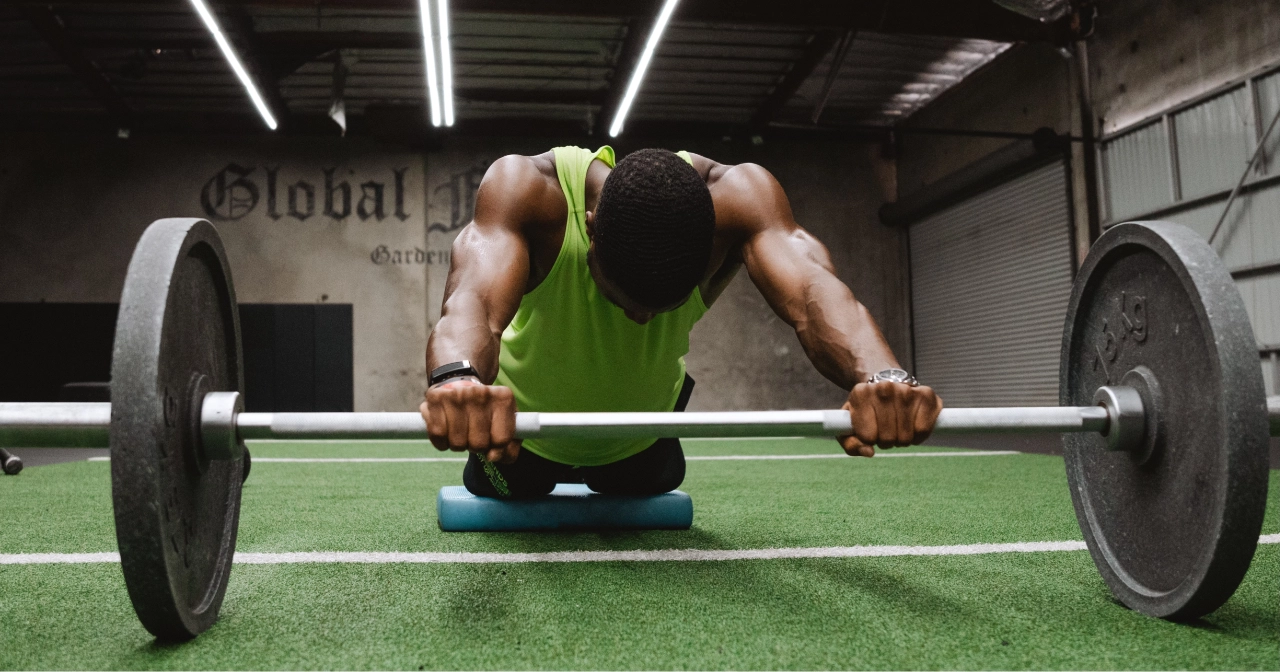Listen on: Apple Podcasts | Spotify
Strength training, along with optimal sleep and a high-protein diet, could be considered a preventative treatment as well as a medical therapy. Benefits of resistance training include:
- Reversing muscle loss (sarcopenia or cachexia)
- Restoring a healthy metabolism
- Reducing body fat
- Improving physical function, strength, coordination, and mobility
- Improving insulin sensitivity and reversing type II diabetes
- Enhancing cardiovascular health by reducing blood pressure, cholesterol, and triglycerides while improving vascular tone
- Increasing bone density
- Enhancing mental health
- Reducing inflammation
That’s quite a list of health benefits. If a drug did all that, it would be a bigger seller than a COVID-19 vaccine.
Strength training does a lot more than make you look and perform better. It unleashes a plethora of health-inducing hormones, neurotransmitters, and compounds called myokines. Myokines play a pivotal role in maintaining healthy inflammation levels, among many other things.
A recent paper summarized these compounds, which highlighted the powerful effects of hypertrophy (muscle-building) training.
I’ll do my best to simplify what these compounds do. At the same time, I don’t want to lose sight of the fascinating way our bodies work in response to the right type of exercise.

Feel Better Fast. Guaranteed.
Energy+, EDGE, and MentaBiotics make up the Happy Juice supplement stack, with ingredients clinically proven to:
- decrease anxiousness scores by 55%
- decrease irritability scores by 60%
- decrease fatigue by 64%
- decrease anger 54%
- decrease tension by 45%
- decrease confusion by 43%
- decrease overall distress by 49%
- increase good bacteria by 70%
- decrease negative mood by 105%
- increase positive mood by 211%
Cytokines, Myokines, and Contracting Muscles
Cytokines are chemical messengers secreted by various cells throughout your body.
You might be familiar with the term “cytokine” from all of the attention on COVID-19 these past couple of years. We’ve heard how a COVID-19 infection or the vaccine itself can trigger a “cytokine storm,” a state of rapid and uncontrolled inflammation and pain.
While the cytokines involved in this scary situation are bad news, that doesn’t mean all cytokines are bad. Many of them are anti-inflammatory. And even pro-inflammatory cytokines are essential for metabolic function, even though they can become problematic when things go awry.
Muscle cells produce a certain category of cytokines called myokines when they contract with sufficient intensity. Myokines may affect the cells themselves (an autocrine effect), nearby cells (a paracrine effect), or affect cells far away from them (an endocrine effect).
Myokines lead to many of the health and fitness benefits of resistance training.
Myokines and Resistance Training
For more than 20 years, researchers have understood numerous metabolic effects of strength training, resulting from myokine secretion.
A 2007 research paper stated:
Our research was originally driven by a curiosity as to whether exercise-induced cytokines would provide a mechanistic explanation to exercise-induced immune changes. However, the identification of skeletal muscle as a cytokine-producing organ soon led to the discovery that not only could muscle-derived cytokines account for exercise-associated immune changes but also that these muscle-derived cytokines played a role in mediating the exercise-associated metabolic changes, as well as the metabolic changes following training adaptation.
Pederson BK, et al.
For a muscle cell to secrete its strength, health, and fitness-enhancing effects, it you must stress it with at least one of the following:
- mechanical tension – a force that exceeds what it’s accustomed to, generated through an intense contraction or an excessive stretch
- muscle damage – microscopic muscle tears
- metabolic stress – a state that takes your muscle cells out of their normal cellular environment, such as a significant drop in pH (an increase in acidity)
Muscle cells secrete different myokines depending on whether you’re training with high loads and low repetitions (hypertrophy training) or low load, high repetitions (strength endurance training).
In the current block of VIGOR Strength Athlete, I’ve included both ends of the spectrum.
To a certain extent, the phrase, “No pain, no gain,” accurately describes how you benefit from resistance training. Training without any muscular discomfort probably won’t lead to significant changes, as it’s unlikely to trigger myokine release, affect hormone levels, or stimulate protein synthesis.
To emphasize the powerful effects of strength training, I’ll briefly cover the resistance training-stimulated myokines below.
Brain-derived Neurotrophic Factor (BDNF)
As the name suggests, BDNF affects the growth and development of neurons, which then affects cognitive function. Interestingly, BDNF secreted by muscle cells only affects local cells, but BDNF rises throughout the body following strength training. This means that a variety of tissues release BDNF in response to intense resistance training, affecting numerous organs as well as other tissues.
BDNF also:
- aids in recovery of damaged muscle tissue
- enhances fat metabolism in muscle cells
- improves glucose utilization, helping to normalize blood sugar levels
Dercorin and Follistatin
Decorin and Follistatin are myostatin antagonists, meaning that they compete with the effects of myostatin, which helps lead to muscle cell growth.
Decorin also:
- enhances myoblast (undeveloped cells that can become muscle cells) proliferation
- inhibits angiogenesis and tumorgenesis (tumor formation)
Follistatin:
- stimulates satellite cell proliferation
- may enhance healing of injured muscles
- reduces muscle scar tissue formation
Interleukin-6 (IL-6)
Interleukin-6 is often seen as a pro-inflammatory cytokine. For example, the havoc created by a cytokine storm is, at least in part, due to high levels of IL-6. Interestingly, when muscle cells secrete IL-6, it lowers inflammation levels. Following an intense strength training session, IL-6 levels can rise by up to 100 times. IL-6 also:
- inhibits TNF alpha and IL-1 beta
- improves insulin sensitivity
- stimulates satellite cell proliferation which helps cause muscle cell growth
- stimulates protein synthesis
Irisin
Irisin causes the browning of fat tissue. Brown adipose tissue is highly thermogenic compared to white adipose tissue, which is more of a fat-storage tissue. It also:
- enhances bone density
- reduces insulin resistance and improves glucose usage
- plays a role in neurogenesis, the growth of new nervous system cells
- stimulates cancer cell death (apoptosis)
- aids in mitochondrial biogenesis, the growth of mitochondria
Meteorin-Like (Metrnl)
Meterorin-like also causes the conversion of white adipose tissue to brown adipose tissue, which enhances insulin sensitivity. This is one of the most recently-discovered myokines, so there’s much more to learn about it. Research shows it plays a role in the immune response and inflammation as well.
Myostatin
Myostatin reduces muscle cell growth. In humans, it’s extremely rare for someone to maintain low myostatin levels, but strength training does help to lower myostatin levels temporarily, allowing for increased muscle growth.
The Belgian Blue bull is the best example of what happens when myostatin levels are minimzed. These bulls are born with a genetic trait that shuts down myostatin production. As a result, they’re far more muscular than a typical bull.

People with muscle wasting diseases, myopathy, or sarcopenia often have high levels of myostatin, but they also tend to not perform much resistance training. It’s possible that consistent resistance training would help lower myostatin, allowing them to preserve muscle mass.
As of yet, there is no pharmaceutical solution for lowering myostatin, which makes resistance training all that much more important.
Read also: Why You Should Workout While Injured.
Strength Training Programming to Maximize Myokine Expression
Consistent, intense strength training seems to have a more significant impact on myokine secretion than a single bout or intermittent exercise. And using a combination of low-rep, high-load training with low-load, high-rep training stimulates the greatest mix of myokines, as the table below shows.
| High Load, Low Repetition | Low Load, High Repetition |
|---|---|
| Decreased Myostatin | Increased PGC-1⍺ |
| Increased Folistatin | Increased Irisin |
| Increased Decorin | Increased Meteorin-like |
| Increased Interleukin-6 | |
| Increased Brain-Derived Neurotrophic Factor | |
| Stimulates Protein Synthesis | Stimulates Mitochondrial Biogenesis |
Not surprisingly, other nutrition and lifestyle factors play roles as well. As the authors of the new paper explained:
the myokine stimulation seems to depend on more factors than only on the intensity and duration of training including cofactors like nutrition, lifestyle, medication, circadian rhythmic and several more influences, presumably the myokine production. Therefore, we should consider a multidimensional context in the exercise induced cell metabolism for further studies. Particularly, we should pay attention to the nutritional influence on cell metabolism. We already know, for example, that amino acids can induce mTOR and lead to protein biosynthesis. Some studies already investigate the influence of nutritional facts on myokine production.
Zunner BEM, et al.
This brings us back to where I started, stressing the importance of:
You could probably add the Foundational Five to the list as well. These are the basics of building muscle, which is an essential part of your health, no matter your age.
Resistance training turns on your body’s built-in pharmaceutical plant, enhancing your health at the risk of one small side effect: delayed onset muscle soreness (DOMS). That’s a small inconvenience for such a significant benefit.
The best part is that you get these benefits for just the cost of a gym membership and the sweat equity needed to perform a handful of resistance training sessions each week.

Feel Better Fast. Guaranteed.
Energy+, EDGE, and MentaBiotics make up the Happy Juice supplement stack, with ingredients clinically proven to:
- decrease anxiousness scores by 55%
- decrease irritability scores by 60%
- decrease fatigue by 64%
- decrease anger 54%
- decrease tension by 45%
- decrease confusion by 43%
- decrease overall distress by 49%
- increase good bacteria by 70%
- decrease negative mood by 105%
- increase positive mood by 211%
Photo by Joseph Oso on Unsplash
References
Cytokine Storm Response to COVID-19 Vaccinations | OMICS International | Abstract. https://www.omicsonline.org/peer-reviewed/cytokine-storm-response-to-covid19-vaccinations-114798.html. Accessed 20 Apr. 2022.
Delezie, Julien, and Christoph Handschin. “Endocrine Crosstalk Between Skeletal Muscle and the Brain.” Frontiers in Neurology, vol. 9, Aug. 2018, p. 698. PubMed Central, https://doi.org/10.3389/fneur.2018.00698.
Pedersen, Bente Klarlund, et al. “Role of Myokines in Exercise and Metabolism.” Journal of Applied Physiology, vol. 103, no. 3, Sept. 2007, pp. 1093–98. journals.physiology.org (Atypon), https://doi.org/10.1152/japplphysiol.00080.2007.
Westcott, Wayne L. “Resistance Training Is Medicine: Effects of Strength Training on Health.” Current Sports Medicine Reports, vol. 11, no. 4, Aug. 2012, pp. 209–16. journals.lww.com, https://doi.org/10.1249/JSR.0b013e31825dabb8.
Zhang, Chi, et al. “Cytokine Release Syndrome in Severe COVID-19: Interleukin-6 Receptor Antagonist Tocilizumab May Be the Key to Reduce Mortality.” International Journal of Antimicrobial Agents, vol. 55, no. 5, May 2020, p. 105954. PubMed Central, https://doi.org/10.1016/j.ijantimicag.2020.105954.
Zhang, Jun-Ming, and Jianxiong An. “Cytokines, Inflammation and Pain.” International Anesthesiology Clinics, vol. 45, no. 2, 2007, pp. 27–37. PubMed Central, https://doi.org/10.1097/AIA.0b013e318034194e.
Zunner, Beate E. M., et al. “Myokines and Resistance Training: A Narrative Review.” International Journal of Molecular Sciences, vol. 23, no. 7, Mar. 2022, p. 3501. PubMed Central, https://doi.org/10.3390/ijms23073501.



